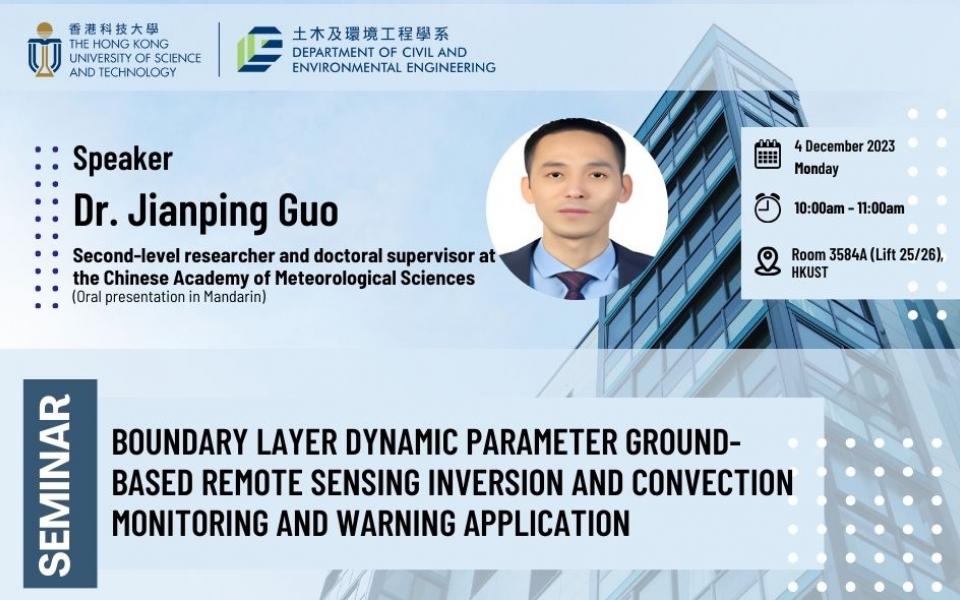Civil Engineering Departmental Seminar - Boundary Layer Dynamic Parameter Ground-based Remote Sensing Inversion and Convection Monitoring and Warning Application
Boundary Layer Dynamic Parameter Ground-based Remote Sensing Inversion and Convection Monitoring and Warning Application
The favorable boundary layer thermodynamic conditions prior to convective cloud triggering are an important prerequisite for the triggering of severe weather. Most previous studies have been based on traditional observation and analysis data such as weather radar, sounding, and reanalysis. With the continuous innovation of atmospheric detection methods, traditional observation methods are no longer sufficient to meet the needs of continuous observation in time and space. New observation methods such as wind profile radar, microwave radiometer, and cloud radar have the advantages of high automation, dense spatial distribution, and high temporal resolution, which are more conducive to in-depth analysis of the triggering and subsequent development processes of severe storm clouds. Therefore, this report will start from the forefront of boundary layer meteorology and aim at the difficulties in monitoring and warning of convective triggering. By using the dense wind profile radar and cloud radar network observation data in eastern China and combining with the static meteorological satellite cloud image, the boundary layer dynamic profile triangle algorithm will be proposed, and dynamic profile products will be developed to reveal the pre-convective signals, analyze the boundary layer-cloud coupling process, and clarify the unique role of the boundary layer thermodynamic profile products in convective triggering and short-term warning.
